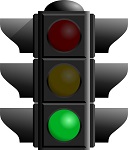Trading Lesson - Selling Thinly Traded Stocks
Apr 04, 2022
Today, I sent out an alert recommending that as a defensive measure, a thinly traded stock (CMCL) be sold ASAP. Judging from the questions I got its apparent that some don't know how to handle the sale of thinly traded stocks. Below is a primer on thinly traded stocks and how to trade them.
Definition - a stock that is said to be "thinly traded" is one where daily volume is not sufficient to ensure that at anytime the stock's bid and ask prices are close together. Further, if all the trading volume is occurring at the open or the close then a stock may be thinly traded midday. We usually consider 100,000 shares daily volume to be the lower limit of our volume range and a volume that should avoid thinly traded stock situations.
Market Orders - Since we try to limit our trading to higher volume stocks, normally market orders can be used safely to buy and sell our stocks. Where market orders become a problem is with thinly traded stocks. If you place a market sell order for a thinly traded stock currently trading at say $28.50, you may be surprised to discover that your order was filled at $26.75, the current bid price. So, how can you check to make sure the stock your selling isn't thinly traded RIGHT NOW? The answer is INTRADAY TRADING.
Intraday Trading Charts - The way to tell if a stock is likely thinly traded is through the use of an Intraday Trading Chart. These can be found as a third stock chart option along with Daily and Weekly Charts. The intraday chart breaks the trading action of a stock into 5 minute intervals. The chart of a thinly traded stock will look very different than those you are used to. You'll see intervals with no trades and intervals with wide trading price ranges all because of the gaps between bids and asks due to lack of trading volume. Pull up the intraday chart for CMCL and you will see what I mean.
Trading Solution - 1. Avoid thinly traded stocks if possible.
2. Don't use Market Orders for thinly traded stocks. Instead use a Stop-Limit Order to reduce your risk.
Stop-Limit Order - A sell stop limit order, unlike the Market Order, will only execute at a specified price.
So, for example, if you place a sell stop-limit order for CMCL at $15, nothing will happen until the stock trades at $15 or more. The $15 price triggers the submission of the order. Then the order only gets filled when the bid price equals or exceeds $15.
Pros and Cons - The advantage of a Stop-Limit Order is that it won't be filled at say $13 due a lack of decent bids. The negative is that there is no guarantee that the order will be triggered and filled at all. A Stop-Limit Order needs to be watched and if necessary adjusted in order to ensure its execution.
So let's review.
- use the Intraday Trading Chart to identify potentially thinly traded stock situations.
- if you have a thinly traded stock, don't use market sell orders.
- instead, use sell orders such as Stop-Limit Orders to have sell orders executed at desired price.
- don't leave Stop-Limit Orders unattended. Check on them to make sure they execute and where necessary adjust your price parameters.
I hope this explanation is helpful to those who are relatively new to stock trading.
Duncan Campbell
Stay connected with news and updates!
Join our mailing list to receive the latest news and updates from our team.
Don't worry, your information will not be shared.
We hate SPAM. We will never sell your information, for any reason.

